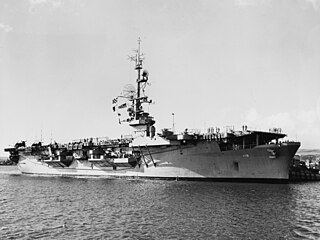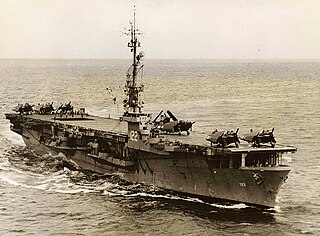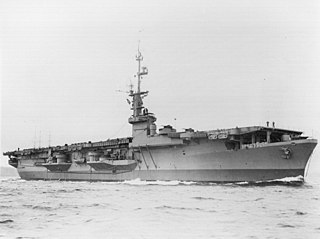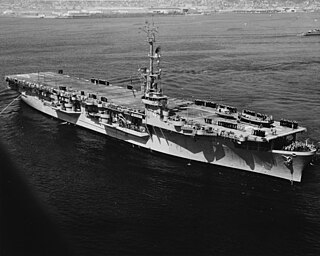The escort carrier or escort aircraft carrier, also called a "jeep carrier" or "baby flattop" in the United States Navy (USN) or "Woolworth Carrier" by the Royal Navy, was a small and slower type of aircraft carrier used by the Royal Navy, the Royal Canadian Navy, the United States Navy, the Imperial Japanese Navy and Imperial Japanese Army Air Force in World War II. They were typically half the length and a third the displacement of larger fleet carriers, more-lightly armed and armored, and carried fewer planes. Escort carriers were most often built upon a commercial ship hull, so they were cheaper and could be built quickly. This was their principal advantage as they could be completed in greater numbers as a stop-gap when fleet carriers were scarce. However, the lack of protection made escort carriers particularly vulnerable, and several were sunk with great loss of life. The light carrier was a similar concept to the escort carrier in most respects, but was fast enough to operate alongside fleet carriers.

USS Bairoko (CVE-115) was a Commencement Bay-class escort carrier of the United States Navy in service from 1945 to 1955.

USS Rabaul (CVE/CVHE/AKV-21) was a Commencement Bay-class escort carrier of the United States Navy. She was delivered on 30 August 1946, but never commissioned. After spending 26 years in reserve, she was scrapped in 1973.

USS Casablanca (AVG/ACV/CVE-55) was the first of fifty Casablanca-class escort carriers built for the United States Navy during World War II. She was named after the Naval Battle of Casablanca, conducted as a part of the wider Operation Torch, which pitted the United States Navy against the remnants of the French Navy controlled by Vichy France. The American victory cleared the way for the seizure of the port of Casablanca as well as the Allied occupation of French Morocco. The ship was launched in April 1943, commissioned in July, and served as a training and transport carrier throughout the war. Postwar, she participated in Operation Magic Carpet, repatriating U.S. servicemen from throughout the Pacific. She was decommissioned in June 1946, when she was mothballed in the Atlantic Reserve Fleet. She was sold for scrap in April 1947.

USS Palau (CVE–122) was a Commencement Bay-class escort carrier of the United States Navy.

USS Mindoro was a Commencement Bay-class escort carrier of the United States Navy. The ship was a converted oil tanker, and she had a capacity to carry up to thirty-three aircraft. She was built during World War II, but was completed too late to see action during the conflict. She nevertheless saw service with the 8th Fleet in the late 1940s and early 1950s in the Atlantic Ocean. She also made two deployments to the Mediterranean Sea, in 1950 and 1954, before being decommissioned in January 1955 and assigned to the Atlantic Reserve Fleet. She was retained for just four years before being struck from the naval register in December 1959 and thereafter scrapped.

USS Point Cruz (CVE-119) was a Commencement Bay-class escort carrier of the United States Navy. Originally named Trocadero Bay until 5 June 1944 when it was renamed after the Honiara suburb Point Cruz, which was an important location during the Guadalcanal Campaign. She was laid down on 4 December 1944 by Todd Pacific Shipyards Incorporated, Tacoma, Washington; launched on 18 May 1945, sponsored by Mrs. Earl R. DeLong; and commissioned on 16 October 1945.

USS Saidor (CVE-117) was a Commencement Bay-class escort carrier of the United States Navy.

USS Sicily (CVE-118) was a Commencement Bay-class escort carrier in the United States Navy. She was named in honor of the island of Sicily, which was the site of a major invasion during World War II. Sicily was laid down on 23 October 1944 by Todd-Pacific Shipyards, Tacoma, Washington, as Sandy Bay; launched on 14 April 1945; sponsored by Mrs. Julius Vanderwiele; renamed Sicily on 5 June 1945; and commissioned on 27 February 1946, Capt. B. W. Wright in command.

USS Commencement Bay (CVE-105), the lead ship of her class, was an escort carrier and later helicopter carrier of the United States Navy, used mostly as a training ship.

USS Cape Gloucester (CVE-109) was a Commencement Bay-class escort carrier of the United States Navy, in service from 5 March 1945 to 5 November 1946. After spending another 25 years in the reserve fleet, the ship was scrapped in 1971.

USS Block Island was a Commencement Bay-class escort carrier of the United States Navy. She was the second ship to carry her name, done in honor of the first one, being launched 12 days after the original was sunk.

USS Gilbert Islands (CVE-107) was a Commencement Bay-class escort carrier of the United States Navy.

USS Vermillion Bay (CVE-108) was a Commencement Bay-class escort carrier of the United States Navy. She was renamed Kula Gulf on 6 November 1943; laid down by Todd-Pacific Shipyards, Inc., Tacoma, Wash. on 16 December 1943; launched on 15 August 1944; sponsored by Miss Dorothy Mott; completed by Willamette Iron & Steel Corp., Portland, Oregon; and commissioned at Portland on 12 May 1945, Captain J. W. King in command.

USS Salerno Bay (CVE-110) was a Commencement Bay-class escort carrier laid down on 7 February 1944 by Seattle-Tacoma Shipbuilding Corporation, Tacoma, Washington; launched on 26 September 1944; sponsored by Mrs. Ward Gilbert; transferred to the Commercial Iron Works, Portland, Oregon, for completion on 29 September 1944; and commissioned on 19 May 1945, Captain W. C. Holt in command.

USS Siboney (CVE-112/AKV-12) was a Commencement Bay-class escort carrier of the United States Navy. She was the second ship named for Siboney, Cuba, the Cuban Village near which troops of Theodore Roosevelt's Rough Riders fought during the Spanish–American War.

USS Rendova (CVE-114) was a Commencement Bay-class escort carrier of the United States Navy.

USS Puget Sound (CVE–113) was a Commencement Bay-class escort carrier of the United States Navy.

USS Vella Gulf (CVE-111) was a Commencement Bay-class escort carrier of the United States Navy. She was laid down as Totem Bay on 7 March 1944 at Tacoma, Washington by the Todd-Pacific Shipyards. She was renamed Vella Gulf on 26 April 1944 and launched on 19 October 1944, sponsored by Mrs. Donald F. Smith. On 9 April 1945, she was commissioned with Captain Robert W. Morse in command.

The Commencement Bay-class escort aircraft carriers were the last class of escort carriers built for the US Navy in World War II.



















